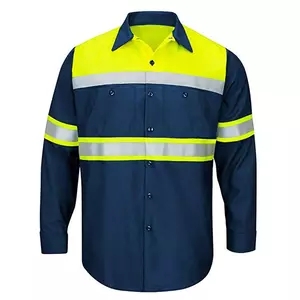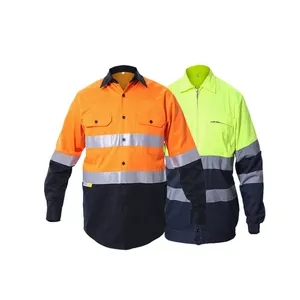Staff uniforms play a hidden yet significant role in various aspects of organizations and industries. Beyond their outward appearance, uniforms have a range of effects that may not be immediately obvious. Here are some hidden roles of staff uniforms:
- Fostering Unity: Uniforms promote a sense of unity among employees. By wearing the same attire, individuals become part of a team, fostering camaraderie and cooperation.
- Leveling the Playing Field: Uniforms eliminate visible indicators of social status or economic differences. This promotes a more equal and inclusive environment where employees are judged based on their skills and contributions rather than appearances.
- Building Company Culture: Uniforms can serve as a tangible representation of company values and culture. They align employees with the organization’s mission and create a shared sense of identity.
- Reducing Decision Fatigue: Wearing uniforms eliminates the need for daily outfit selection, reducing decision fatigue and freeing mental energy for more important tasks.
- Enhancing Customer Trust: Uniforms convey professionalism and competence, influencing customer trust and satisfaction. Customers are more likely to approach uniformed employees for assistance.
- Employee Confidence: Uniforms can boost employees’ self-esteem and confidence. When they wear a uniform associated with their role, they feel a stronger sense of purpose and identity.
- Setting Standards: Uniforms establish a standard of dress that aligns with the organization’s values. This helps maintain a professional image and ensures consistency in customer interactions.
- Instilling Discipline: Uniforms instill a sense of discipline and structure. Employees are more likely to adhere to rules and guidelines when dressed in a uniform associated with their professional role.
- Security and Safety: Uniforms can serve as a form of identification, enhancing security in restricted areas. They can also include safety features such as reflective elements or protective gear.
- Cultural Integration: In diverse workplaces, uniforms provide a unifying element that transcends cultural differences. Everyone wears the same attire regardless of their background.
- Encouraging Accountability: Employees in uniforms are easily identifiable, encouraging them to take responsibility for their actions and interactions with colleagues, customers, and the public.
- Alignment with Brand Identity: Uniforms visually represent the company’s brand and identity. They contribute to consistent branding across all touchpoints, reinforcing the organization’s image.
- Professionalism in Remote Work: In remote work scenarios where video calls are common, having a designated uniform for virtual meetings can help employees maintain a professional appearance.
- Minimizing Workplace Distractions: Uniforms can reduce distractions caused by varied clothing choices and inappropriate attire, creating a more focused work environment.
- Emphasizing Accountability: Uniforms hold wearers accountable for their actions as they are easily recognizable representatives of the organization.
In essence, staff uniforms are more than just clothing; they serve as powerful tools that shape behavior, perception, and the overall dynamics of a workplace. The hidden roles of staff uniforms influence organizational culture, employee interactions, and the overall success of businesses and institutions.
























